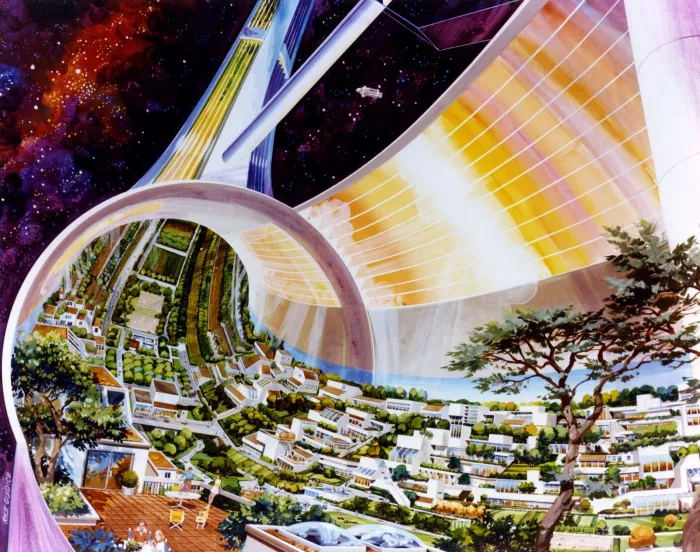Since its establishment on July 29, 1958, NASA has been actively imagining the future and advanced deployment When hearing about "space colonization", the first thing that comes to mind for many people is the illustration of the large spherical rotating spacecraft with artificial gravity generation function created by this aerospace agency With the launch of the international space station for decades, relevant concepts jointly promoted by NASA, the space Department and science fiction creators have been closer and closer to realization.
Data map (from NASA Ames Research Center)
For example, axiom space is building new modules for the international space station, and they can be split and expanded later to form a newer and more modern space station.
In addition, on December 21, 2021, blue origin revealed that NASA had reached cooperation with companies such as Sierra space and Boeing to rebuild another space station in low earth orbit.
Compared with the current international space station, the new facility will have more spacious working and living areas, allow access to private space tourists, and remain committed to innovative manufacturing and research.
However, looking back on the grand vision set in 1975, our pace is still too slow.
Annular space habitat imagined by NASA and Stanford University
Earlier, the National Space Society released a four and a half minute old video looking forward to the concept of space colony in 1975, just after the Apollo exploration mission.
After successfully landing on the moon, many Americans began to think about the next stage of space exploration, such as whether NASA would go to Mars first or build a space city (torus project).
In a paper entitled "space habitat: a design study", the Stanford team considered how to accommodate tens of thousands of space residents in a huge round wheel.
The Lagrangian point of gravity balance between the earth and the moon is obviously a good location - if you can build a mile wide ring that rotates slowly every minute.
NASA Space Colonization 1975 - National Space Society(via)
In the environment of artificial gravity, people in space cities will be able to grow crops and make maximum use of solar energy, while reflecting deadly cosmic radiation through the mirror. The building materials obtained from the moon are obviously much easier than the earth.
Of course, this idea is not uncommon. After all, as early as 1952, Wernher von Braun, an early leader of NASA, had put forward a similar concept of artificial gravity space station. The only difference is that you prefer to go to Mars or stay between earth and moon orbits.
NASA explained that the first Skylab space station in the United States proved that humans can live in space for up to one year (1973-1974), and then the space outpost attracted the first docking cooperation between the United States and Russia. Unfortunately, unlike the early Habitat concept, the international space station does not have artificial gravity.
Bill paloski, former director of NASA's human research program, replied in a podcast that the problem was that the facility was expensive and that research on the effects of microgravity on humans was still in its infancy. In contrast, it is much simpler to equip the space station with fitness equipment for daily exercise.
